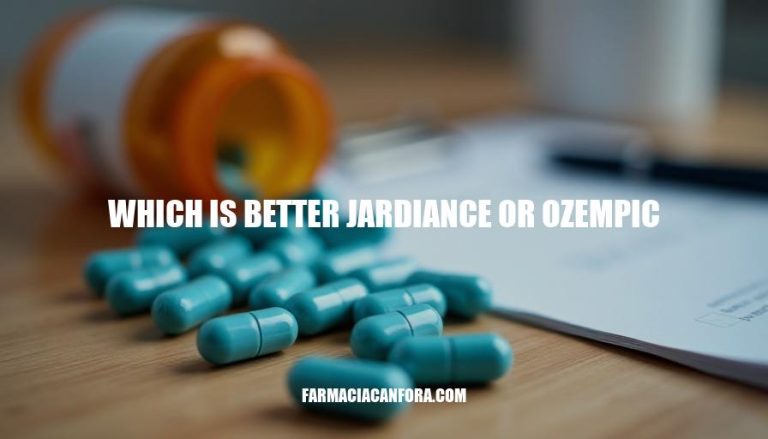


When managing type 2 diabetes, choosing the right medication is crucial. Jardiance and Ozempic are two popular options, each with unique benefits. Jardiance, an SGLT2 inhibitor, is taken daily as a pill and offers significant cardiovascular and kidney benefits. Ozempic, a GLP-1 receptor agonist, is a weekly injection known for its effectiveness in glycemic control and weight loss. Determining which is better depends on individual health needs and treatment goals.
Here’s a detailed explanation of how Jardiance and Ozempic work:
Mechanism of Action:
Health Benefits:
Mechanism of Action:
Health Benefits:
Both medications are effective for managing blood glucose levels and offer additional health benefits, particularly for cardiovascular health and weight management.
Jardiance (empagliflozin) and Ozempic (semaglutide) are both effective in controlling blood glucose levels in patients with type 2 diabetes, but they work differently and have varying degrees of efficacy.
Jardiance is a sodium-glucose co-transporter 2 (SGLT2) inhibitor. It works by preventing glucose reabsorption in the kidneys, leading to glucose excretion through urine. Clinical trials have shown that Jardiance significantly lowers HbA1c levels and also provides cardiovascular benefits, such as reducing the risk of heart failure and chronic kidney disease.
Ozempic is a glucagon-like peptide-1 (GLP-1) receptor agonist. It mimics the effects of the GLP-1 hormone, which increases insulin secretion, decreases glucagon release, and slows gastric emptying. Clinical trials, such as the PIONEER 2 trial, have demonstrated that Ozempic is superior to Jardiance in reducing HbA1c levels. In this trial, Ozempic reduced HbA1c by 1.3% compared to 0.9% with Jardiance over 26 weeks. Additionally, Ozempic has shown greater efficacy in weight loss compared to Jardiance.
In summary, while both medications are effective, Ozempic has shown greater efficacy in lowering HbA1c and promoting weight loss compared to Jardiance. However, the choice between them may depend on individual patient needs and health profiles.
Jardiance (empagliflozin):
Ozempic (semaglutide):
Each medication offers unique advantages, with Jardiance being particularly beneficial for heart failure and CKD, while Ozempic provides additional weight loss benefits.
Here’s a comparison of the common side effects of Jardiance and Ozempic, including their prevalence and severity:
Here are some key points to consider when determining whether a patient might be better suited for Jardiance or Ozempic:
Jardiance is an SGLT2 inhibitor that works by blocking glucose reabsorption in the kidneys, while Ozempic is a GLP-1 receptor agonist that mimics the effects of the GLP-1 hormone. Both medications are effective in controlling blood glucose levels and offer additional health benefits, particularly for cardiovascular health and weight management.
Jardiance has been shown to reduce the risk of major adverse cardiovascular events (MACE) in people with type 2 diabetes and established cardiovascular disease, as well as provide benefits for patients with chronic kidney disease (CKD). Ozempic, on the other hand, has been associated with significant weight loss and works on areas of the brain that regulate appetite and fullness.
When comparing common side effects, Jardiance is more likely to cause urinary tract infections (UTIs), yeast infections, increased urination, and dehydration. Ozempic is more likely to cause nausea, diarrhea, vomiting, abdominal pain, and constipation.
Jardiance is ideal for patients with type 2 diabetes, especially those with CKD or heart failure, while Ozempic is suitable for patients with type 2 diabetes and those needing significant weight loss. Considering the various factors analyzed, Ozempic may be a better overall option due to its additional benefits for weight loss and cardiovascular health, as well as its potential to work on areas of the brain that regulate appetite and fullness.